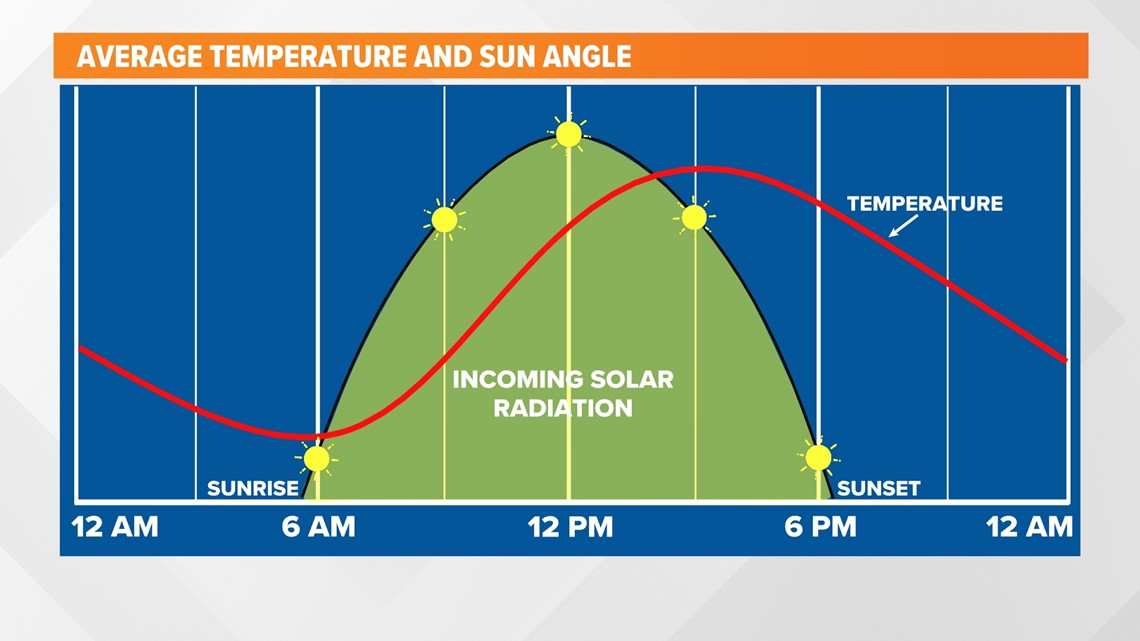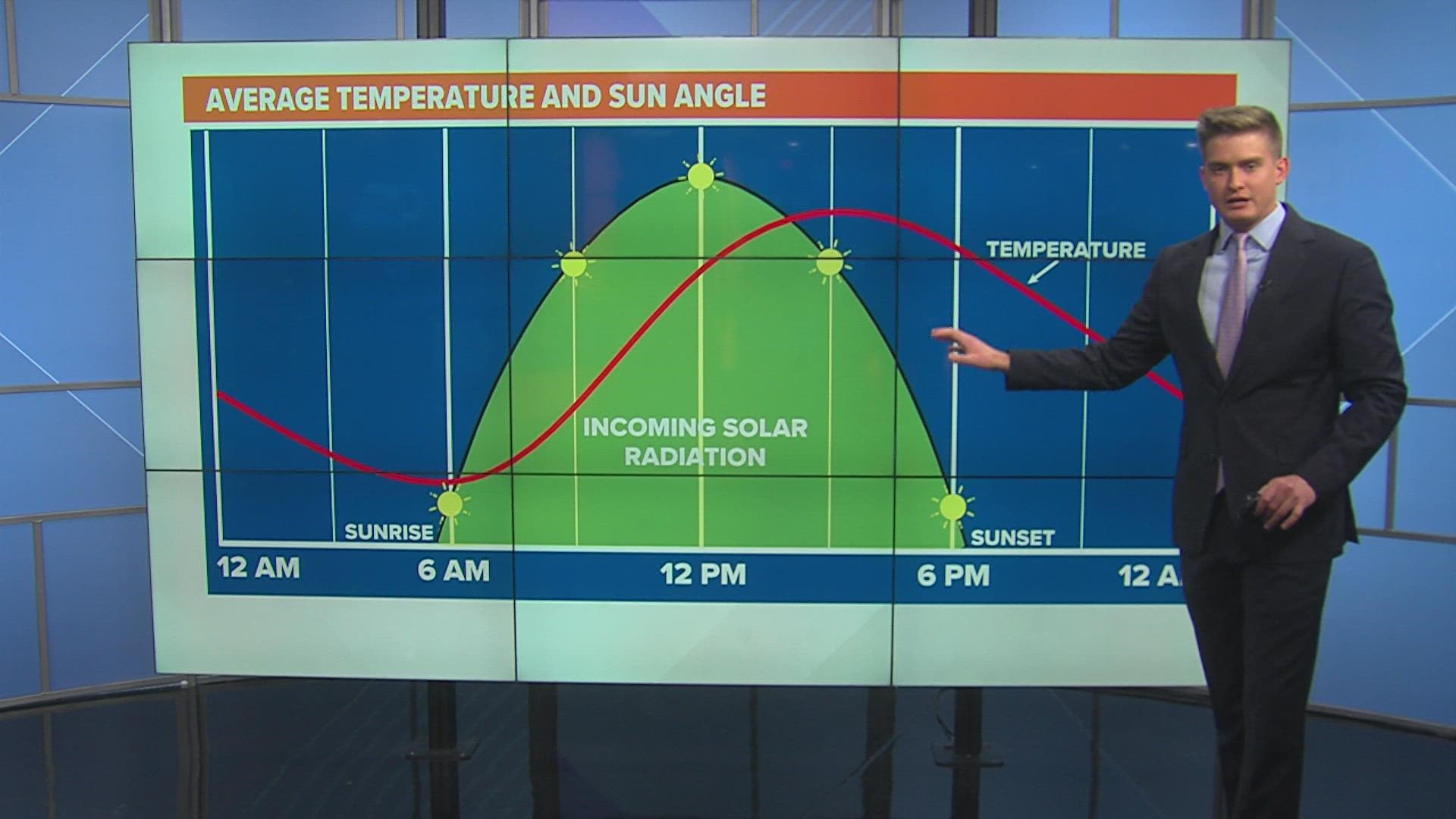DES MOINES, Iowa — If you had to guess, when would you say is the coldest part of the day? Midnight? 3 a.m.?
Believe it or not, the daily low temperature most commonly occurs after sunrise.
It may seem counterintuitive, but there is an explanation.
During the day, the sun sends heat to the earth. The technical term for this is solar radiation. The earth also radiates heat back out, but at a lower rate.
The net result is a rise in temperatures when the sun is up.
When the sun sets, the earth stops receiving solar radiation, but continues to radiate heat away from the surface. The result is a drop in temperatures during the night due to what is known as radiational cooling.
Radiational cooling is much more effective on clear, calm nights.
When the sun rises the next morning, we begin to receive solar radiation once again.
However, the solar radiation right at sunrise is very weak, often weaker than the radiation leaving the earth's surface.


It is not until the sun gets higher in the sky that the solar radiation outweighs the exiting radiation, and the temperature begins to rise.
Local weather phenomena like cloud cover, rain and cold fronts usually supersede the solar effect and cause high/low temperatures to occur at different parts of the day.
Watch more Local 5 Weather lab segments on YouTube

